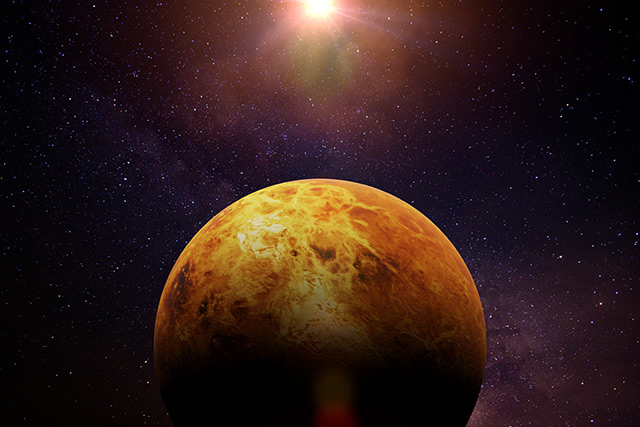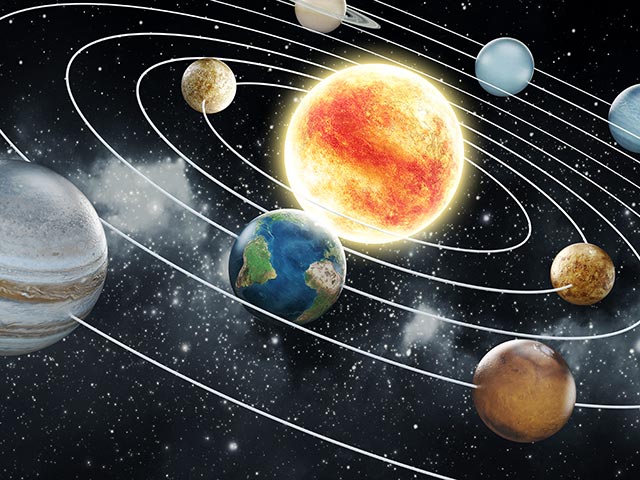Astronomers detect signs of life on Venus
09/16/2020 / By Virgilio Marin

An international team of researchers found evidence of a gas on Venus that could indicate the planet may harbor life.
The gas in question is phosphine, a colorless chemical compound that smells like garlic or decaying fish. It is commonly produced by microorganisms on Earth in the absence of oxygen or by the breakdown of organic matter.
The team detected spectral signatures that are unique to phosphine in the atmosphere of the planet, which is estimated to contain about 20 parts per billion of the gas.
“Phosphine could originate from unknown photochemistry or geochemistry – or, by analogy with biological production of phosphine on Earth, from the presence of life,” wrote the researchers.
The details of the discovery were published in the journal Nature Astronomy.
Phosphine detected on Venus
For Jane Greaves, the lead researcher of the study and an astronomer at Cardiff University in Wales, the finding came as a surprise. She has been looking for signs of life on Venus in 2017, using the James Clerk Maxwell Telescope at Hawaii’s Mauna Kea Observatory, but phosphine was not a chemical she expected to detect.
Together with her colleagues, Greaves set out to confirm the finding using a bigger telescope, the Atacama Large Millimeter Array in Chile. This time, they found not just signs of phosphine, but indicators that suggested that there’s a lot of it in Venusian atmosphere. At five to 20 parts per billion, atmospheric phosphine on Venus is thousands of times greater than atmospheric phosphine on Earth.
The National Aeronautics and Space Administration’s (NASA) Cassini spacecraft had previously detected phosphine in the atmospheres of Jupiter and Saturn. But life is not needed to form the gas on these faraway planets; the immense heat and pressure on those planets can jam phosphorus and hydrogen together to form phosphine.
However, smaller, rocky planets, such as Earth and Venus, do not have enough energy to produce great amounts of phosphine through that process. Instead, the chemical is produced by anaerobic life, microorganisms that thrive without oxygen.
Phosphine can be found in human intestines, animal dung, deep-sea worms and other biological environments where anaerobic microbes exist. It can also be produced synthetically. In fact, it was previously developed for chemical warfare and was later used as an agricultural fumigant.
Life on Venus? Not so fast, say researchers
Scientists don’t usually turn to Venus when searching for life in outer space. The planet, which is the second closest to the Sun, is characterized by intense surface temperatures that reach more than 850 degrees. Atmospheric pressure levels on the planet are also 92 times higher than on Earth.
However, it’s likely that environmental conditions on Venus were once milder. NASA Scientists found that Venus likely harbored liquid water for two to three billion years, potentially supporting life. But a massive outgassing event about 700 million years ago could have possibly triggered a runaway greenhouse effect. This event was posited to be responsible for the planet’s transformation to the hot-house that it is today.
While Venus’s surface is a searing hellscape incapable of supporting life, its upper cloud deck, which is about 33 to 38 miles aboveground, is more temperate in comparison. Temperatures in this region reach 120 degrees and atmospheric pressure is closer to that of Earth.
Meanwhile, Venus’s clouds are also highly acidic, which means that phosphine is broken down easily and, therefore, must be continually replenished. Greaves’ team speculates that, if phosphine on Venus is indeed produced by life forms, these organisms retreated into this region of the atmosphere after the outgassing event. (Related: NASA says that aliens live on Venus, but they’re only microbes.)
However, they noted that abiotic explanations cannot be ruled out yet. According to the researchers, “Even if [the presence of phosphine is] confirmed, we emphasize that the detection of phosphine is not robust evidence for life, only for anomalous and unexplained chemistry.”
The existence of life on the planet’s atmosphere is only one possible explanation for the phosphine. The team say that further studies are required to validate this theory. To do so, scientists needs to get their hands on data taken directly from the planet.
Space.news has more on the search for alien life.
Sources include:
Tagged Under: alien life, atmosphere, chemical signatures, cool science, cosmic, discovery, NASA, phosphine, Space, space explorations, Venus
RECENT NEWS & ARTICLES
Cosmic.News is a fact-based public education website published by Cosmic News Features, LLC.
All content copyright © 2018 by Cosmic News Features, LLC.
Contact Us with Tips or Corrections
All trademarks, registered trademarks and servicemarks mentioned on this site are the property of their respective owners.



















